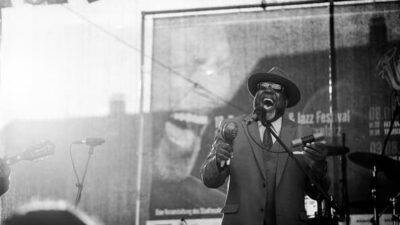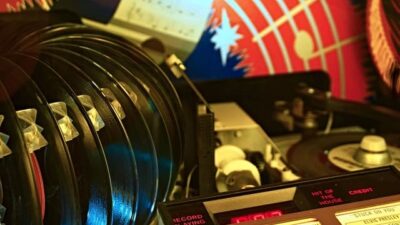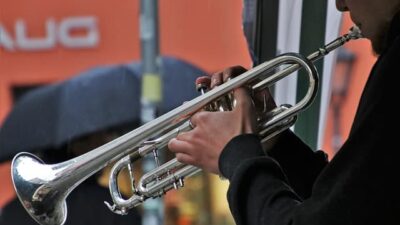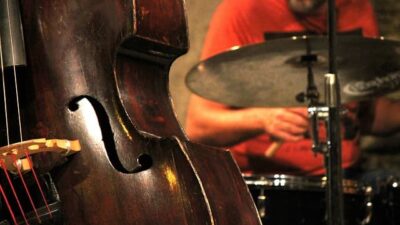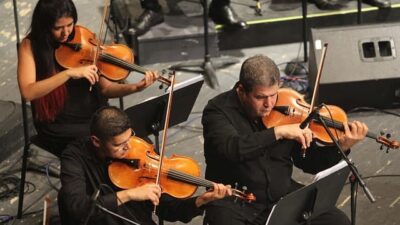From smoky bars to concert halls, jazz music has captured the hearts and ears of music enthusiasts for decades. With its distinctive improvisation, complex harmonies, and infectious rhythms, jazz has become a genre that continues to captivate audiences around the world. In this article, we will delve into the fascinating world of jazz, exploring its origins, key figures, styles, and its unexpected connection to the realm of live casinos.
What is Jazz Music?
Jazz is a uniquely American musical genre that originated in the late 19th and early 20th centuries. It is characterized by its syncopated rhythms, improvisation, and inventive use of harmony. Jazz is often described as a musical conversation, where musicians interact and respond to each other’s musical ideas in real-time.
The Origins of Jazz
The roots of jazz can be traced back to African musical traditions brought to the United States through the transatlantic slave trade. These traditions merged with European musical influences, African-American spirituals, and the blues, giving birth to what would later become known as jazz. The birthplace of jazz is widely recognized as New Orleans, a melting pot of cultures and musical styles.
Jazz Styles and Subgenres
Over the years, jazz has evolved and branched out into various styles and subgenres, each with its own distinct characteristics and notable figures. Let’s explore some of the most significant jazz styles:
Swing
Swing, also known as “big band” jazz, emerged in the 1930s and 1940s. It is characterized by its energetic, danceable rhythms, featuring large ensembles with brass and woodwind instruments. Swing music, with its infectious beats and memorable melodies, became a staple of the era’s dance halls.
Bebop
Bebop emerged in the 1940s as a response to the commercialization of swing music. It prioritized intricate melodies, complex harmonies, and lightning-fast improvisation. Bebop musicians, such as Charlie Parker and Dizzy Gillespie, pushed the boundaries of jazz, creating a new language within the genre.
Cool Jazz
Cool jazz, also known as West Coast jazz, emerged in the late 1940s and early 1950s. It featured a more relaxed, laid-back style compared to bebop. Cool jazz musicians, including Miles Davis and Chet Baker, embraced subtlety, softer tones, and intricate arrangements.
Fusion
Fusion jazz emerged in the late 1960s and blended elements of jazz with other genres, such as rock, funk, and electronic music. Artists like Miles Davis, Herbie Hancock, and Weather Report incorporated electric instruments and experimentation, creating a fusion of styles that pushed jazz into new sonic territories.
Latin Jazz
Latin jazz fuses Afro-Cuban and Brazilian rhythms with jazz improvisation. Artists like Tito Puente, Cal Tjader, and Antonio Carlos Jobim introduced Latin influences, including salsa, bossa nova, and samba, into the jazz repertoire, creating an exciting and vibrant fusion.
Jazz and Live Casinos
While jazz and live casinos may seem unrelated at first glance, there is a surprising connection between the two.
The Connection Between Jazz and Casinos
Jazz music has often been associated with the vibrant atmosphere of casinos. Thethrilling and energetic nature of jazz aligns perfectly with the excitement and allure of the casino environment. The improvisational and spontaneous nature of jazz mirrors the unpredictability and risk-taking inherent in https://livecasinofinder.com/mobile-live-casino/ casino games. Jazz bands and musicians have been a common fixture in casino lounges and entertainment venues, creating a lively and engaging atmosphere for visitors.
Live Casino Experience
In recent years, the world of online gambling has seen significant advancements, with the emergence of live casinos. Live casinos bring the thrill of a real casino directly to the screens of players around the world. With live streaming technology, players can interact with professional dealers and other players in real-time, enhancing the immersive experience. As players enjoy their favorite casino games, the soothing sounds of jazz music can often be heard in the background, adding an extra layer of sophistication and enjoyment to the live casino experience.
Key Figures in Jazz History
Throughout its history, jazz has been shaped by numerous iconic figures who have left an indelible mark on the genre. Let’s explore some of these influential musicians:
Louis Armstrong
Louis Armstrong, also known as Satchmo, was a trumpet player and vocalist who played a pivotal role in the development of jazz. His virtuosic trumpet playing and unique singing style made him one of the most influential figures in jazz history.
Duke Ellington
Duke Ellington was a composer, bandleader, and pianist who brought sophistication and elegance to jazz. His orchestra, the Duke Ellington Orchestra, showcased his innovative compositions and arrangements, earning him the title of one of the greatest jazz composers of all time.
Miles Davis
Miles Davis was a trailblazing trumpeter and bandleader who played a crucial role in the development of cool jazz and fusion. His experimentation and willingness to push the boundaries of the genre made him a transformative figure in the world of jazz.
John Coltrane
John Coltrane, a saxophonist and composer, was a key figure in the development of avant-garde and free jazz. His innovative improvisations and spiritual approach to music continue to inspire musicians to this day.
Jazz Instruments
Jazz music is renowned for its wide array of instruments that contribute to its distinctive sound. Here are some of the key instruments commonly associated with jazz:
- Trumpet
- Saxophone
- Piano
- Double Bass
- Drums
- Trombone
- Guitar
Each instrument brings its unique timbre and role to the ensemble, allowing for endless possibilities of musical expression and interaction.
Characteristics of Jazz Music
Several defining characteristics contribute to the richness and allure of jazz music:
Improvisation
One of the hallmarks of jazz is improvisation. Musicians often take turns creating spontaneous melodies and solos, building upon the chord progressions and melodies of a given piece. This element of improvisation allows for endless creativity and individual expression within the framework of a composition.
Syncopation
Syncopation is a rhythmic technique commonly used in jazz. It involves placing accents on off-beats or unexpected parts of a measure, creating a distinctive and lively rhythmic feel. Syncopation adds a sense of unpredictability and rhythmic complexity to jazz music.
Swing Feel
The swing feel is a distinctive rhythmic quality in jazz that gives it a relaxed and propulsive groove. It involves playing eighth notes unevenly, with the first note slightly longer than the second, creating a bouncy and swinging rhythm. The swing feel is integral to many jazz styles, particularly swing and big band jazz.
Call and Response
Call and response is a musical conversation between different instruments or sections of a band. It involves one musician playing a phrase or melody, and another musician or group of musicians responding with their own musical statement. Call and response fosters interaction, spontaneity, and dynamic interplay within a jazz ensemble.
Conclusion
Jazz music remains a vibrant and influential genre that continues to captivate listeners worldwide. Its rich history, diverse styles, and innovative musicians have shaped the landscape of music and inspired countless artists across various genres. Whether it’s the soulful melodies of Louis Armstrong or the groundbreaking improvisations of Miles Davis, jazz music has an enduring appeal that transcends time.



